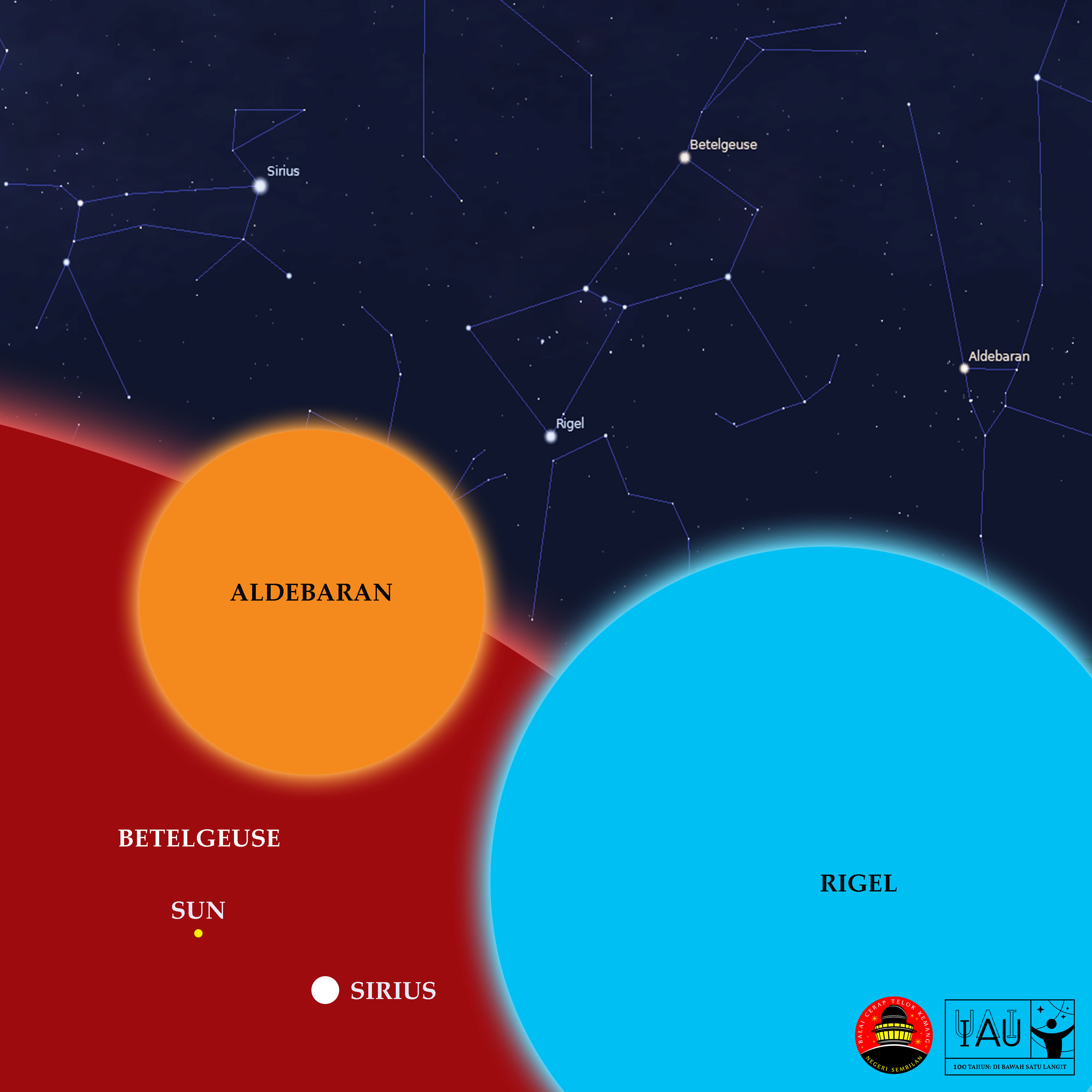Red Supergiant: Betelgeuse

Amirul Hazim bin Kamarulzaman (USIM Internship Student 2019)
 Betelgeuse as captured from Telok Kemang Observatory.
Betelgeuse as captured from Telok Kemang Observatory.
Known as the “shoulder of the giant” when translated from Arabic, this is Betelgeuse. Betelgeuse is a red supergiant star that is thousand times bigger than the Sun but colder than the Sun. The temperature is around 3300°C and Betelgeuse is at its final phase stage of its life cycle and will soon exploded becoming a supernova. Not to worry or gets too excited to see it becoming a supernova because this will not occur until thousands or maybe millions of years away. You might not have a chance to see it.
Betelgeuse is one of the stars that form the Orion constellation. It is also one of the brightest stars in the Orion and can be easily spotted by naked eyes. Orion constellation is also known as the “hunter” or “giant” constellation by other early civilisation. Orion is one of the constellations in the sky from 88 other constellations recognised by International Astronomical Union (IAU). By using radio interferometry, Betelgeuse is located at a distance of 640 light years away.
 Size of the stars as compared to the Sun.
Size of the stars as compared to the Sun.
The life cycle of a star varies among other stars. This will depend upon its own mass. Some stars can end up being a neutron star or nebula or white dwarf or even a black hole. For example, for a star that is similar as the mass of the Sun, eventually it will end up as a white dwarf. If a star has a mass of bigger than the Sun it might end up either a neutron star or a black hole. This is all depends on the star’s mass.
 Life cycle of a star by Idrees Kahloon and Kevin Waterman.
Life cycle of a star by Idrees Kahloon and Kevin Waterman.
In the night sky, we can see a lot of stars. The ability for us to see the stars at night depends on its magnitude. When we observe the stars from Earth, this is called as the apparent magnitude. For Betelgeuse, it has an apparent magnitude of 0.45 and it is the second brightest star in the Orion constellation.
 Apparent magnitude scale, negative value will indicate a bright object while positive value will indicate a dim object.
Apparent magnitude scale, negative value will indicate a bright object while positive value will indicate a dim object.
 Constellations at night as captured from Telok Kemang Observatory.
Constellations at night as captured from Telok Kemang Observatory.


